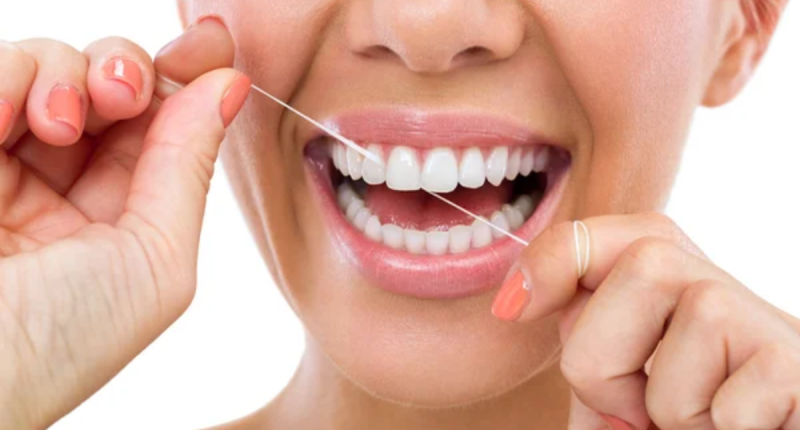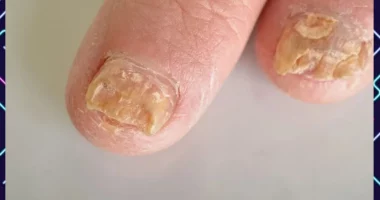5 Reasons Flossing Protects Your Teeth and Gums – Flossing is an essential part of a good oral hygiene routine. It helps to remove plaque and food particles from between your teeth, where your toothbrush can’t reach. Plaque is a sticky film that contains bacteria, and if it is not removed, it can harden into tartar. Tartar can lead to cavities, gum disease, and other serious dental problems.
Here are 5 reasons why flossing protects your teeth and gums:
Prevents Cavities
Cavities are formed when plaque, a sticky film of bacteria, is not removed from teeth. Plaque produces acids that attack the enamel, or outer layer, of teeth. Over time, this can lead to small holes in the enamel, or cavities.
Flossing helps to remove plaque from between teeth, where toothbrushes cannot reach. This helps to prevent cavities from forming.
A study published in the Journal of the American Dental Association found that people who flossed once a day had 40% less plaque and 30% less gingivitis (gum inflammation) than those who did not floss. The study also found that flossing reduced the risk of cavities by 40%.
Another study, published in the journal Public Health Dentistry, found that flossing was more effective at preventing cavities than brushing alone. The study found that people who flossed once a day had 25% fewer cavities than those who only brushed their teeth.
Prevents Gum Disease
Gum disease, also known as periodontal disease, is an inflammation of the gums that can lead to tooth loss. It is caused by bacteria that build up on teeth and gums. Gum disease is a serious problem, but it is preventable with good oral hygiene, including flossing.
Flossing also helps to stimulate blood flow to the gums. This helps to keep the gums healthy and reduces the risk of gum disease.
RELATED: 12 Diseases You Can Catch Through Sharing Toothbrush
Reduces Bad Breath
Flossing can indeed help reduce bad breath. Bad breath, also known as halitosis, is often caused by the presence of food particles and bacteria in your mouth. When you eat, small food particles can become trapped between your teeth, providing a food source for the bacteria that naturally live in your mouth. These bacteria can break down these food particles, releasing foul-smelling compounds, which can lead to bad breath.
Flossing is an effective way to remove these food particles and plaque from between your teeth and along the gumline. By doing so, you reduce the food source for the bacteria, which can lead to fresher breath. Additionally, flossing helps maintain good oral hygiene and gum health, which are also important factors in preventing bad breath.
RELATED: 24 Causes Of Bad Breath And Cure
Improves Overall Health
Some studies have shown that flossing may help improve overall health by reducing the risk of heart disease, stroke, and diabetes. This is thought to be because gum disease can cause inflammation throughout the body.
Saves You Money On Dental Bills
Yes, flossing can save you money on dental bills in the long run. Flossing helps to prevent cavities and gum disease, which are two of the most common and expensive dental problems to treat.
Cavities can lead to fillings, crowns, and even root canals, all of which can be expensive. Gum disease can lead to tooth loss, which can require dental implants or bridges, which are even more expensive.
Flossing is a simple and inexpensive way to prevent these problems from developing. It is estimated that flossing once a day can save you an average of $4,000 over a lifetime.
In addition to saving you money on dental bills, flossing can also save you time and hassle. Cavities and gum disease can also be painful and time-consuming to treat. By flossing regularly, you can avoid these problems altogether and keep your smile healthy and bright.
How Often Should I Floss?
It is recommended to floss once a day, preferably before bed. Flossing before bed helps to remove food particles and plaque that have accumulated throughout the day.
Step-By-Step Guide On Proper Flossing Technique
Step-by-step guide on proper flossing technique:
1. Choose the right floss:
Start by selecting a dental floss that suits your needs and preferences. Whether you prefer waxed or unwaxed, flavored or unflavored, finding a floss that feels comfortable in your hands is essential.
2. Cut an adequate length of floss:
Take about 18-24 inches of dental floss and wind most of it around one finger on each hand, leaving an inch or two to work with.
3. Hold the floss correctly:
Hold the floss tightly between your thumb and forefinger, leaving about an inch of space between them for effective maneuverability.
4. Slide gently between teeth:
Carefully slide the floss between your teeth using a gentle sawing motion. Avoid snapping or forcing it into place as this can harm your gums.
5. Form a C-shape around each tooth:
Once you reach the gumline, curve the floss into a C-shape against one tooth and carefully glide it up and down along its surface to remove plaque buildup.
6. Repeat for all teeth:
Continue moving from tooth to tooth, using clean sections of the floss as you go along. Be sure to get both sides of each tooth and pay extra attention to hard-to-reach areas at the back of your mouth.
7. Practice regularly:
Consistency is key when it comes to maintaining good oral hygiene habits like regular brushing and daily fLossing routine! Remember, mastering proper technique may take some practice initially but with time, you will become more proficient in reaching those nooks and crannies where bacteria hide.









